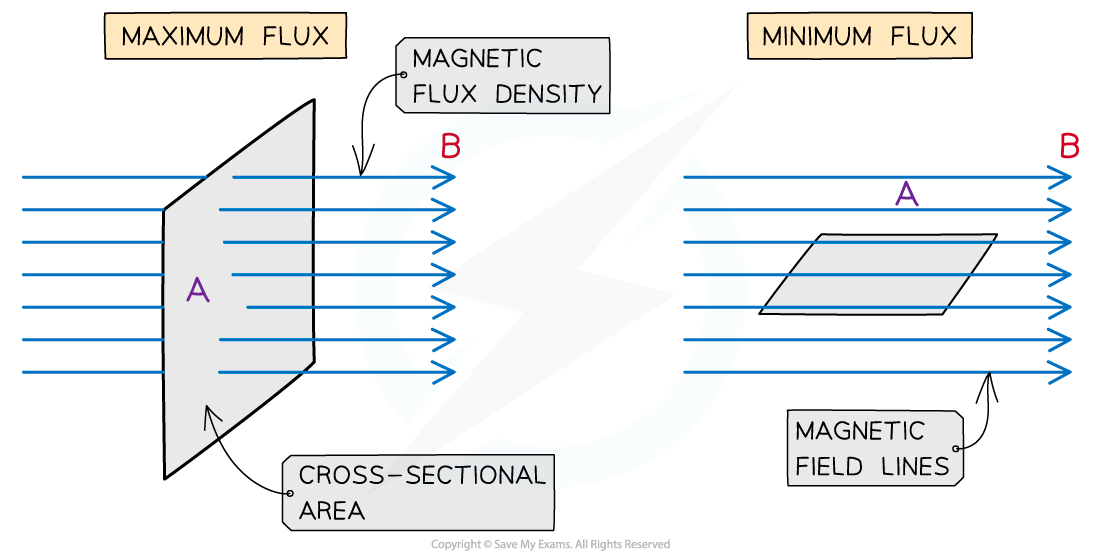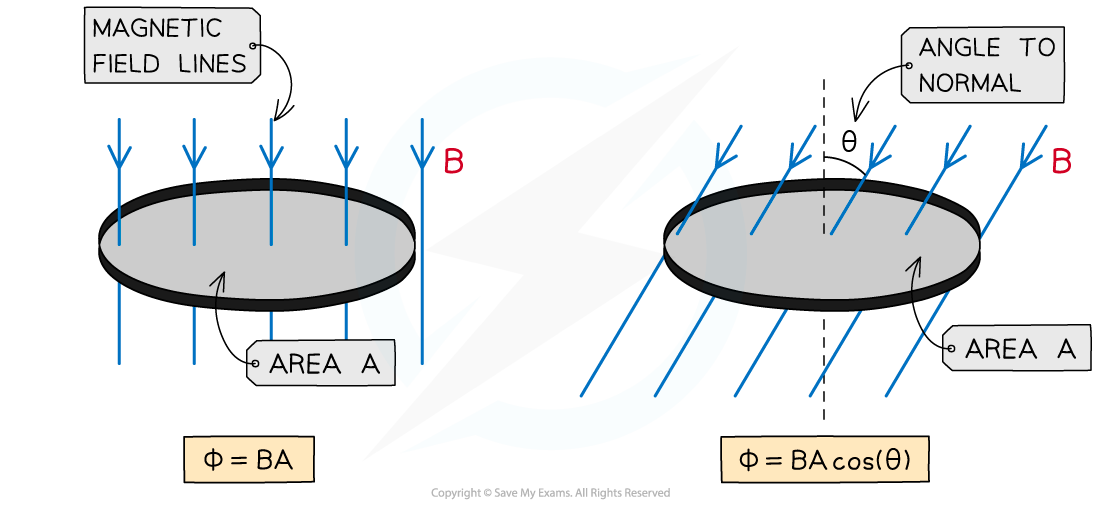Magnetic Flux (Cambridge (CIE) A Level Physics) : Revision Note
Magnetic flux definition
Electromagnetic induction is the process of inducing an e.m.f in a conductor when there is relative movement between a charge and a magnetic field
This can be observed using a magnet and a coil or a solenoid
This happens when a conductor cuts through magnetic field lines
The amount of e.m.f induced is determined by the magnetic flux
The amount of magnetic flux varies as the coil rotates within the field
The flux is the total magnetic field that passes through a given area
It is a maximum when the magnetic field lines are perpendicular to the plane of the area
It is 0 when the magnetic field lines are parallel to the plane of the area
The magnetic flux is defined as:
The product of the magnetic flux density and the cross-sectional area perpendicular to the direction of the magnetic flux density
In other words, magnetic flux is a measure of the number of magnetic field lines passing through a given area
Maximum and minimum magnetic flux

The magnetic flux is maximum when the magnetic field lines and the area they are travelling through are perpendicular
Calculating magnetic flux
Magnetic flux is defined by the symbol Φ (greek letter ‘phi’)
It is measured in units of Webers (Wb)
Magnetic flux can be calculated using the equation:
Where:
Φ = magnetic flux (Wb)
B = magnetic flux density (T)
A = cross-sectional area (m2)
When the magnet field lines are not completely perpendicular to the area A, then the component of magnetic flux density B perpendicular to the area is taken
The equation then becomes:
Where:
θ = angle between magnetic field lines and the line perpendicular to the plane of the area (often called the normal line) (degrees)
Increasing and decreasing magnetic flux

The magnetic flux increases as the angle between the field lines and normal decreases
This means the magnetic flux is:
maximum = BA when cos(θ) =1 therefore θ = 0o. The magnetic field lines are perpendicular to the plane of the area
minimum = 0 when cos(θ) = 0 therefore θ = 90o. The magnetic fields lines are parallel to the plane of the area
An e.m.f is induced in a circuit when the magnetic flux linkage changes with respect to time
This means an e.m.f is induced when there is:
A changing magnetic flux density B
A changing cross-sectional area A
A change in angle θ
Worked Example
An aluminium window frame has a width of 40 cm and a length of 73 cm, as shown in the figure below

The frame is hinged along the vertical edge AC. When the window is closed, the frame is normal to the Earth’s magnetic field with magnetic flux density 1.8 × 10-5 T.
Calculate the magnetic flux through the window when it is closed.
Answer:
Step 1: Write out the known quantities
Cross-sectional area, A = 40 cm × 73 cm = (40 × 10-2) × (73 × 10-2) = 0.292 m2
Magnetic flux density, B = 1.8 × 10-5 T
Step 2: Write down the equation for magnetic flux
Step 3: Substitute in values
Examiner Tips and Tricks
Consider carefully the value of θ, which is the angle between the field lines and the line normal (perpendicular) to the plane of the area through which the field lines pass. If it helps, drawing the normal on the area provided will help visualise the correct angle.

You've read 0 of your 5 free revision notes this week
Sign up now. It’s free!
Did this page help you?
